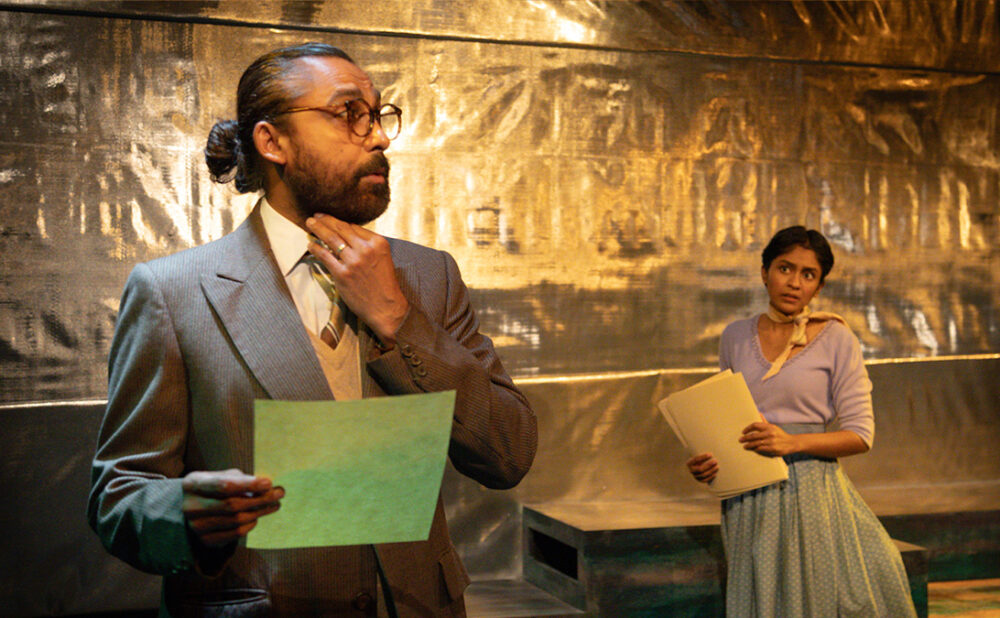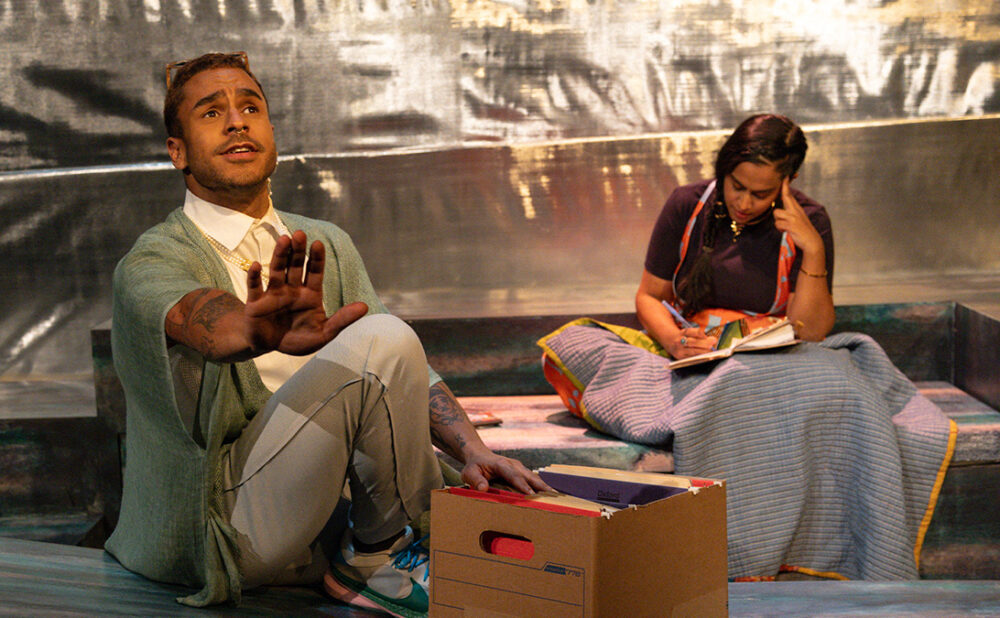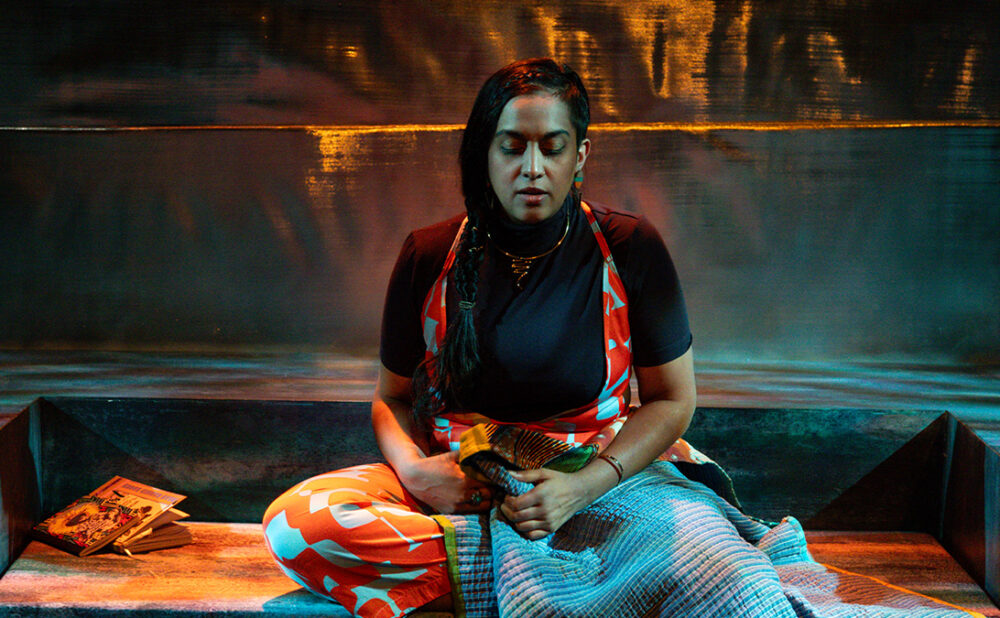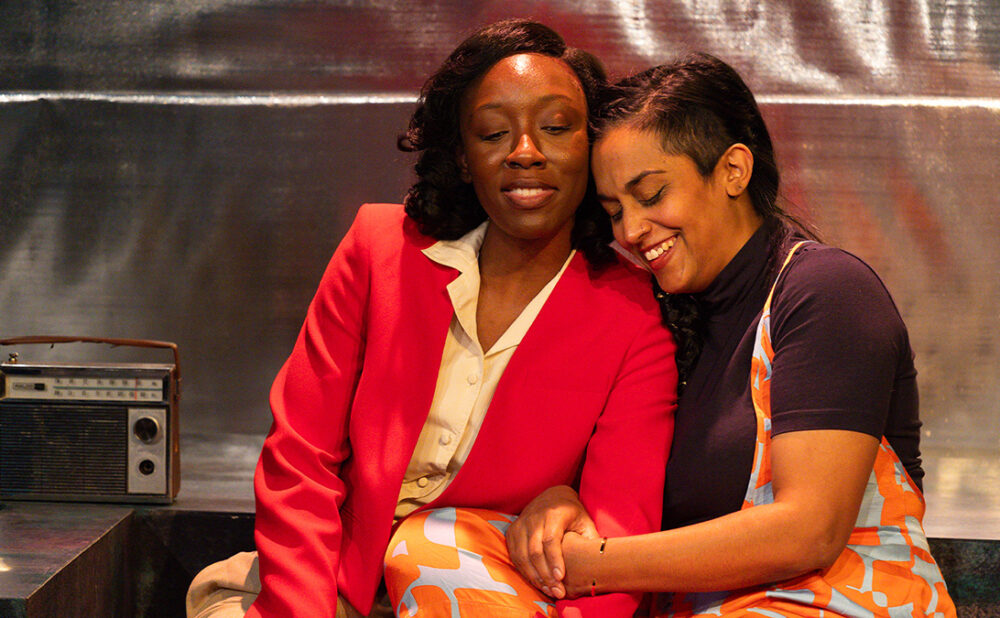Review: ‘A Poem for Rabia’ at Tarragon builds a bridge between generations
Ensemble presents a rich reality for these characters
What: A Poem for Rabia
Where: Tarragon Theatre’s Extraspace, 30 Bridgman Ave.
When: Now, until Sun., Nov. 12
Highlight: Reflective pond as central set piece that ties nicely into thematic arc
Rating: NNN (out of 5)
Why you should go: Exploration of intergenerational strength of womanhood
A POEM FOR RABIA explores a space in which three generations of women from a bloodline coexist and intermingle on stage. In association with Nightwood Theatre and Undercurrent creations, this story explores the perspectives of Zahra in 2054, an activist disillusioned after the abolition of prisons in Canada; Betty in 1953, a secretary in British Guiana caught between her job and a chance to join a national independence movement; and Rabia in 1853, a domestic worker from India who is on the way to the Caribbean on an indentured labour ship.
Playwright Nikki Shaffeeulah also plays Zahra in this velvety love letter to women of the past. There is something quite nice about Shaffeeulah herself playing the modern descendent, conversing with her own ancestors who are communicating with her through this piece. There is a hypnotic poetry to the words of this text; though at times a tad repetitive, they stick with you after you leave the theatre. This script is historically rich, exploring with ease different political times and social changes, all while keeping a sharp thematic eye on humanity and womanhood. Though these women each face their own unique challenges, they are united by struggle and agency: bad things happen to them, but these women are never victims of their story but beacons of strength.
At a run time of two hours and 25 minutes, the script doesn’t always know exactly what it’s trying to be. There are breaks in conventions, such as a scene in the second act that is “replayed” three times in three different genres, including a detective film noir stint. Though exceedingly entertaining, it feels out of place as the rest of the script flows cohesively.
This performance space is pitch-perfect in the intimate 100-seating Tarragon Extraspace, with Sonja Rainey’s terrain-like geometric set that actors use much like a playground: sliding, climbing and standing on it as they deliver text. The most impressive element of the set design was the water pond right downstage, mere feet away from the first row. Not only is water on stage always exciting to me (due to the logistical nightmare it is to make it happen), but especially in this play where the water motif bounds the theatricality, the story and the characters it was a delight. The three women not only have shared words and experiences but also have a shared physical thing: the water. They move from place to place, but water is omnipresent.
The women also have a shared movement vocabulary amongst the piece, thanks to co-directors Donna-Michelle St. Bernard and Clare Preuss. The women step in time with one another, they share the same stomach pain and the same love for the water: the weight of our ancestors defining the way in which we move through the world.
The ensemble presents a rich reality for these characters. Virgilia Griffith, Jay Northcott and Anand Rajaram fill in as several characters in these women’s lives and play each role with ease and emotional impact. The three central women (Nikki Shaffeeulla, Michelle Mohammed and Adele Noronha) are on stage almost the entire time, both witnessing and being active agents in each other’s stories, and it creates an exquisite demonstration of how womanhood is deeply impacted by our ancestors.









